Operations Report – February 2nd
Crew 188 Operational Report 02/02/2018
Sol 5
Zac Trolley
Non-Nominal Systems: Propane supply, Microwave, Rover Charging infrastructure, Greenhab temperature sensor, Suit 2, electrical systems.
Notes on non-nominal systems: See individual systems at the end of the report.
Generator (hours run): 13.5h
Solar: SOC 77%
Diesel: 76%
Propane: 61 psi
Ethanol Free Gasoline (5 Gallon containers for ATV): 8 Gallons
Water (trailer): 0 Gallons
Water (static): 250 Gallons
Trailer to Static Pump used: No
Water (loft) – Static to Loft Pump used: Yes
Meter 130661.4
Toilet tank emptied: No
ATVs Used: None
Oil Added: None
ATV Fuel Used: None
# Hours the ATVs were Used today: 0
Notes on ATVs: none
Deimos rover used: No
Hours: Hours: 106.9h (Accurate as of two days ago, rover was not on campus during EVA to check hours.)
Beginning charge: N/A
Ending charge: N/A
Currently charging: No
Sojourner rover used: ASSIGNED TO DIRECTOR
Hours:
Beginning charge:
Ending charge:
Currently charging:
Spirit rover used: Yes
Hours: 18.0h
Beginning charge: 100%
Ending charge: 91%
Currently charging: No
Opportunity rover used: no
Hours: 13.5
Beginning charge: N/A
Ending charge: N/A
Currently charging: No
Curiosity rover used: Yes
Hours: 10.5h
Beginning charge: 100%
Ending charge: 86%
Currently charging: Yes
HabCar: Not used
General notes and comments: The Hab Director mentioned that the Rovers required an extension cord that is shorter than 25 feet. We estimate the cords being used now are 50 foot cables. I was able to find a 25 foot extension cable, meaning we could charge one rover at time based on the above specifications. Can we have the appropriate extension cables sent to the Hab in order to charge the Rovers?
Also, the configuration the rovers are in means that the rovers need to back out before they are used. Backing up in an EVA suit is hazardous since you can’t see behind you in a suit. Please advise if there is another configuration that allows charging with a 25 foot extension cable as well as the ability to drive forward during EVAs.
Summary of internet: Internet connectivity continues to be a problem even with the data purchased. Devices are having troubles connecting and this is limiting the crews ability to monitor the CapCom emails
Summary of suits and radios: There is a bent clasp on suit #1 on the helmet collar. It was probably bent during the EVA, the system is still functional.
Suit 2’s air supply is no longer functioning. The diagnostics we performed suggests that the switch isn’t operating properly. We are shelving the EVA suit.
Summary of Hab operations: Nominal
Summary of EVA operations: We are still brainstorming ways to combat the helmet fog. Without proper ventilation under the helmet ring, the facemasks rapidly fog up. It is becoming a safety issue on EVA. The other suit configuration seems to have better air flow.
Summary of GreenHab operations: The temperature gauge display has some non-functional LCD areas, a new one has been ordered.
Summary of Science Dome operations: The science dome is awaiting a portable heater as per the Hab Director.
Summary of RAM operations: Not Operational.
Summary of health and safety issues: The propane leak seems to be solved, there was no reports of smell today.
Questions, concerns and requests to Mission Support: The two electrical generation systems are operating on different voltages. The generator is outputting 120V and the solar generator is outputting 140V.
Journalist Report – February 2nd
MDRS Crew 188 Journalist Report 02FEB2018
Safety, Security, and Smelling Gas: Procedures on Mars
SOL-5 Author’s name: Dr. Sarah Jane Pell
During site inductions, Dr. Rupert, Director of the Mars Desert Research Station, explained that “Safety, Simulation, and Science” are the order of priorities and operation during the MDRS Crew rotations. The theme for this report is Safety. Dedicated Simulation and Science reports will follow in the coming days.
BACKGROUND: The MDRS station was designed to mimic the systems integration of a future Martian outpost that supports an optimum crew of 3-7 people. The facilities include the basic infrastructure for self-sustaining living, and supporting typical planetary research-activities and science from astronomy to human health. In addition to the main habitat, there is a green house, a science dome, solar panel array, an engineering unit, parking space, incinerator, generator and two observatories. There are open-air wire tunnels between each module. Since arriving, we have been discovering, documenting and discussing the status of the station’s safety equipment as a matter of priority. SAFETY: As the Operations reports show, our Crew has been responding to a Propane leak recorded in the main habitat: the place where we eat, sleep, train, relax, prepare reports and prepare for EVA work. As an expert commercial diver with a vested interest in identifying combustible gas, I reported the leak to the Director during our first safety briefing. Subsequently the crew began reporting the same smell in large concentrations on the first and second floors with noticeable concentrations above the gas heater, the gas stove, and crew rooms without ventilation ports. Engineer Zac Trolley and the crew have worked methodically and professionally to report, identify, localize and mitigate exposure to the build-up on site to address this safety concern. We are grateful for the support of Commander Ryan Kobrick (Second Engineer), Executive Officer Renee Garifi, the Mission Support Team, MDRS Director, and our HSO. Remember, we travelled from sea level to high altitude from four corners of the globe: we arrived jet-lagged and fatigued, to a dry, cold desert environment, to adjust to new surroundings as a crew for the first time. Many of our symptoms – bar the undeniable and nauseating odor – could be attributed to any number of causes. Fortunately, the tank readings, the Director’s observation, the combustible gas monitoring sensor and the old-fashioned “bubbles” test, confirmed our suspicions. We are now reassured that steps are being taken to addressing the issue. What happens on MDRS is always an opportunity to learn lessons in real-life for application in space. While our Crew is only here for two weeks, and we have access to fresh air without breaking simulation, we are mindful of the risks and hazards for crews on long-duration spaceflight and those living in confined space closed-loop systems such as submarines or underground mining stations, where contamination is a higher risk to human life than fire. How we respond to risk defines us. We hope to provide the Mars Society with a list of recommendations and simple provisions that were not provided for our SIM, in the hope of supporting the safety and fidelity of future simulation crews.
Dr. Sarah Jane Pell
TED Fellow 2010, Australia Council Fellow 2016, Gifted Citizen 2016
The ‘Performing Astronautics: following the Body’s Natural Edge into the Abyss of Space’ project is assisted by the Australian Government through the Australia Council, its arts funding and advisory body http://www.artistastronaut.com
Artist, Occupational Diver, Keynote Speaker, Researcher, Simulation Astronaut http://www.sarahjanepell.com
Science Report – February 2nd
Astronomy Report
Name: Julia De Marines
Crew: 188
Date: 02/02/2018
Sky conditions: Hazy
Wind conditions: low to none
Observation start time 4:30 pm
Observation end time: 5:00 pm
Summary: The last two days have been fairly cloudy and I decided to wait until a sunny day to begin solar observing. This morning was very clear and sunny but I was out on an EVA until 13:00 hours. After lunch and some down time I went out to use the Helioscope. By the time I familiarized myself with the equipment and procedures and programing the teslecope, the sun was starting to get low on the horizon. Also, I goofed and put in Daylight Savings Time instead of Standard Time, so I had to redo the programming of the telescope to be positioned correctly. I have a similar control to my personal telescope so it wasn’t a big deal; however, it just ate away at precious time. By the time I had the sun in the eyepiece, it was quite challenging to be able to see the Sun as the eyepiece was too high. I wasn’t sure if there was a way to rotate the direction of the eyepiece to yield a more favorable angle. I didn’t see an obvious way but perhaps I missed something. Stepping on the small chair in the dome is not a safe idea either. I was able to snap a few shots of the sun though the H-Alpha filter through my phone but it is probably not in focus and the sun was dipping below the lip of the dome retractable door.
Objects viewed: Sun
Problems encountered: Eyepiece too high to easily view the sun. Programmed the scope incorrectly at first, observed too late in the day.
Further questions: I was hoping to get some advice or suggestions on an astrophotography artist project I had in mind. I was inspired by watching the sun setting over the nearby hills and I was wondering if there would be a way to capture my crew eclipsing the sun as it is setting over the hill? It isn’t feasible with the Helioscope because the lip of the dome door is too high and I think the magnification is too high. Also, I think the Hab will eclipse the dome before the Sun sets judging by the shadow of the hab as I was leaving the dome. With the equipment we have available, can you think of a way to do this? We were able to accomplish this at Sommers Bosch observatory in Boulder but it’s been too long for me to recall details of how they did this. Please let me know if you have any suggestions for a safe way to accomplish this! Thank you!
[end]
Greenhab Report – February 2nd
Crew 188 Sol 5 Green Hab Report 02February2018
Zac Trolley, Crew Engineer, Guest writing for Julia De Marines (Crew Astronomer/GreenHab Officer)
02 February 2018
Environmental control: Heating
Ambient with door opening: Shade cloth on
Working hours in Green Hab: 09:00-09:30, 11:00 – 14:00, 18:00 – 19:00
Outside temp at working hour: 11ºC
Inside temp at working hour: 26ºC
Inside temp H: 34ºC
Inside temp L: 18ºC
Inside humidity: 35 %
Inside humidity H: 85%
Inside humidity L: 14%
Hours of supplemental light: 06:00 – 9:59
Changes to the crops: A row of lettuce was replanted from the small pot containers to a window style planter. A salad crop was taken for lunch.
Daily water usage for crops: 12 gallons
Time(s) of watering plants: 11:00 – 14:00 (2 gallons), 18:00 – 19:00 (10 gallons)
Changes to research plants: After an email from Atila, we will be monitoring the quinoa for sprouting.
Narrative: Renee was actively operating in the GreenHab monitoring her experiment. The NASA hardware that we have here at MDRS is a variation of flight hardware that has been on the ISS. I am continually in awe that I am taking part in research that has a direct impact on the future of spaceflight.
The Crew did a little re-potting of lettuce in the hopes that they will grow during our stay so that we can enjoy eating it. If not, future crews will enjoy the fruits of our labor, as we are enjoying the plants that other crews have planted for us.
Future needs and questions: We are awaiting the arrival of the tomato cages so we can replant the tall plants that require support to grow to their full potential. Please advise when they will arrive.
EVA Report – February 2nd
Crew 188 EVA #5 Report 2FEB2018
Author’s name: Tatsunari Tomiyama AHFP, Health & Safety Officer
Purpose of EVA: To perform waypoint data collection of North to Galileo road and scout for future EVA sights
Location of EVA: Galileo Road, and Cactus Road
UDM27 Coordinates: 518800 E, 4250600 N and 519200 E, 4252000 N
Number of EVA Crew: 3
Participants: Julia De Marines, *Sarah Jane Pell, and Tatsunari Tomiyama
*Sarah Jane subbed in for Renee due to assessing her fatigue level in the morning and determining she needed to rest and postpone her EVA to tomorrow.
EVA Commander: Tatsunari Tomiyama
Rovers used: Spirit and Curiosity
Duration: 2 hours
EVA Departure Time: 10:50am
EVA Return Time: 12:45pm
Summary:
We were delayed in our start time for this EVA due to having to re-suit Julia in an alternate EVA suit due to suit #2 having a broken switch. The EVA objective was to collect waypoint data for future EVA sights. This EVA expected and planned to collect waypoints for Galileo Road, and several points on the Cactus Road. Overall, we successfully completed the waypoint data collection on the Cactus Road and Galileo Road.
There were 4 check points on the Cactus Road on the planning. However, we made 6 waypoints on the data collection in this EVA due to the clear visualization. We spent more time than we planned to return to the Hab due to the sample collection being performed at the waypoints.
We made 4 waypoints during this EVA. One is at Galileo Road with the Cow Dung Road as we were trained on driving ATV and rovers. Second waypoint was the intersection with Cactus Road on Galileo Road. This waypoint was relatively difficult to recognize the road visually. We went to the East on cactus Road first and made a waypoint at 11:04. Then, we turned back to the north on the Cactus Road. We stopped and made a waypoint at the entrance of Candor Chasma on Cactus road. We kept driving on Cactus Road to the north. We made a final planned waypoint to the Yellow Zebra Rd. Finally, we visited to the north end of the Cactus Road before reversing our route and returning to the Hab.
Sol Summary Report – February 2nd
Crew 188 Sol 5 Summary Report 2FEB2018
Sol 5
Summary Title: Mars Rocks!
Author’s name: Renee Garifi, MDRS Crew 188 Executive Officer
Status: Almost half-way!
Sol Activity Summary:
Today the crew completed EVA #5 and had a successful afternoon of setting up scientific research hardware, working on personal outreach projects and getting to the overdue tasks that have been previously placed on hold in order to keep pace with the busy mission. We will soon wrap up week number 1 in our home sweet Hab here at MDRS.
The EVA team was excited to share their geological samples collected in the field with the HAB team as soon as they arrived back through the airlock. Julia’s favorite rock found today was a vibrant eye-catching red color that seemed otherworldly and intriguing. They explored a canyon route along Cactus Road and took breathtaking photos and videos of their trek while scouting sights for future science sample collections. Tomorrow, we will be conducting two EVAs with the first scouting for potential micrometeorite deposit sights and collect top soil samples from hill tops to be analyzed for very small micrometeorite rocks. The second will have the crew exploring Hab Ridge by foot to continue to explore our surroundings.
The crew took some well-deserved personal time this afternoon to refresh and gear up for closing out week 1 of our mission. We are looking forward to watching Groundhog Day for the humor and irony (today is Groundhog Day in the USA).
Ad Astra!
Renee Garifi
MDRS Crew 188 Executive Officer
Look Ahead Plan:
EVA 6 is planned for tomorrow to revisit a site from EVA 2 and to further add navigation and waypoint data for the crew to use on all EVAs. EVA 7 is a pedestrian EVA to Hab Ridge. Meanwhile several other projects will be underway inside the dome.
Anomalies in work:
Robotic observatory currently not functional. MDRS Astronomy lead working problem.
Weather:
The weather was clear today with few clouds.
Crew Physical Status:
It was a busy day all around, so we are looking at our mission ahead to plan out key EVAs, science projects, and fun activities to make sure we are having a well-balanced experience.
EVA:
One today, Two tomorrow.
Reports to file:
1. EVA #5 Report
2. EVA #6 and #7 Request
2. Ops Report
3. Sol Summary
4. Journalist Report
5. Creative Report
6. Green Hab Report
7. Daily Photos
Support Requested: Our crew’s reports have not been posted to the MDRS website yet. We would like to request that these be back-posted so that all of our reports and the work we have put into the mission get reflected on the MDRS website.
Per direction from Dr. Rupert, we have removed the broken microwave from the Hab and placed it into the back of the DEIMOS rover for removal. We anxiously await the arrival of our replacement unit by cargo delivery ship.


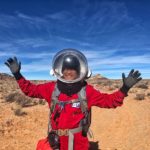
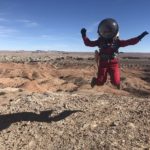
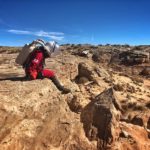
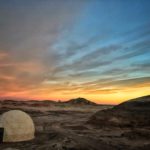
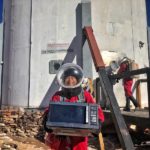

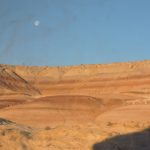
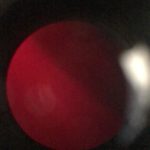
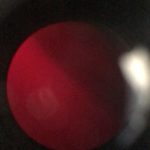

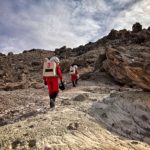
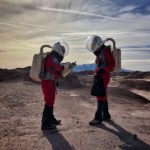
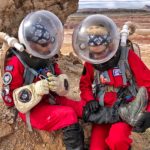
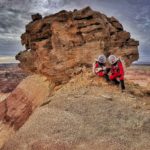
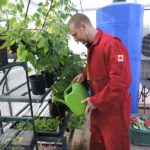
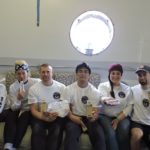
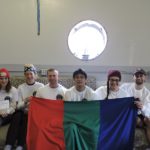
You must be logged in to post a comment.